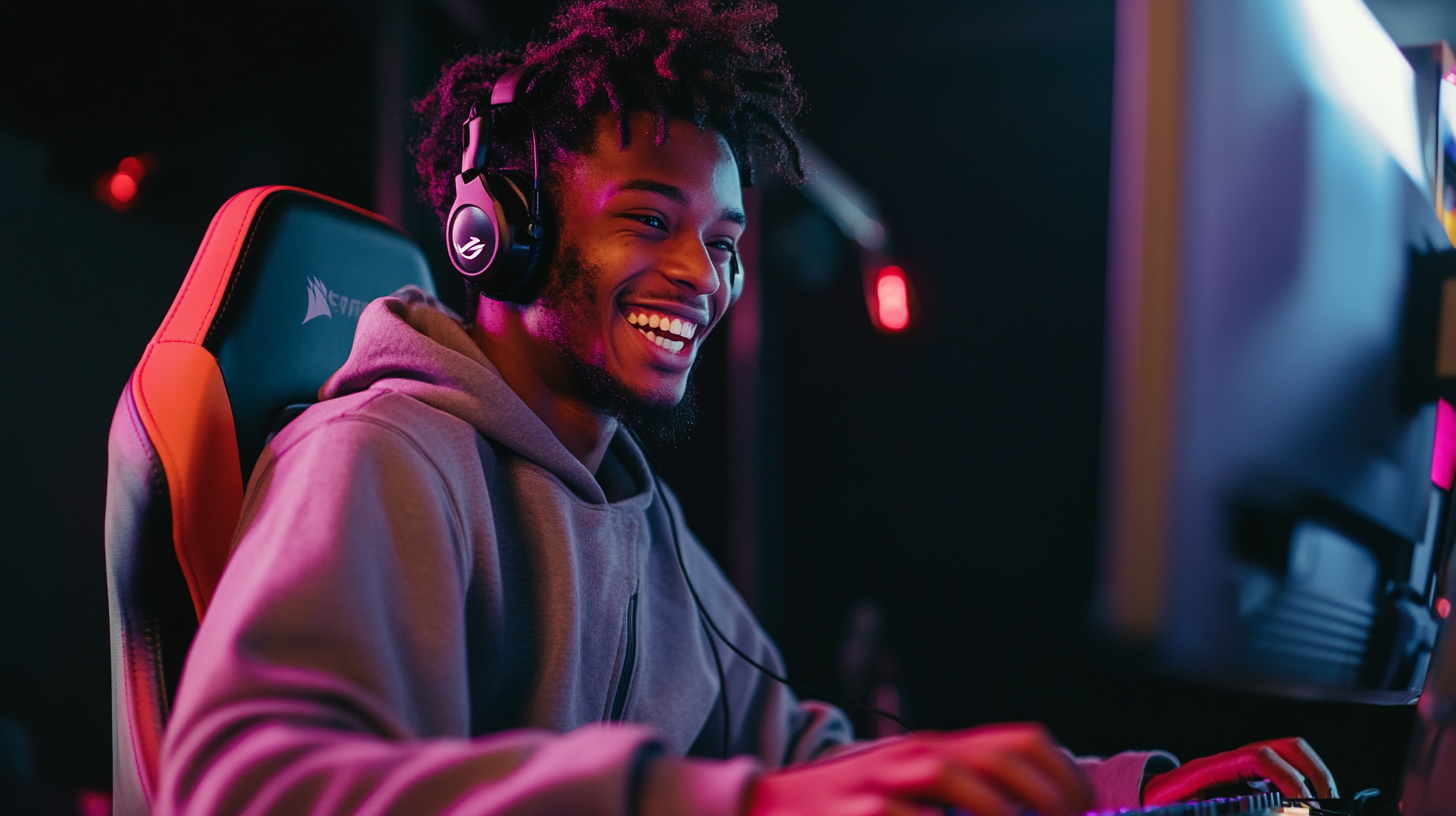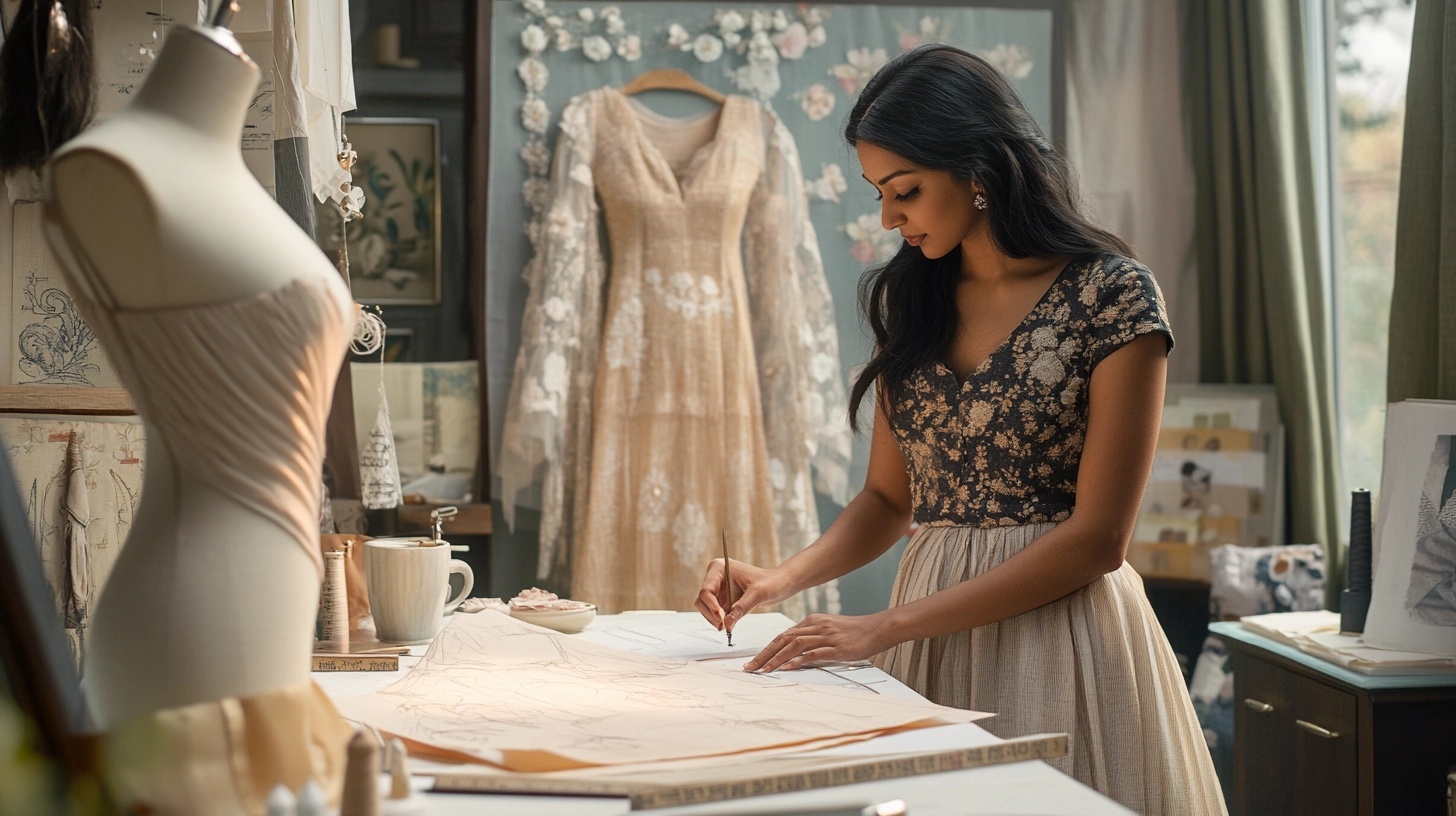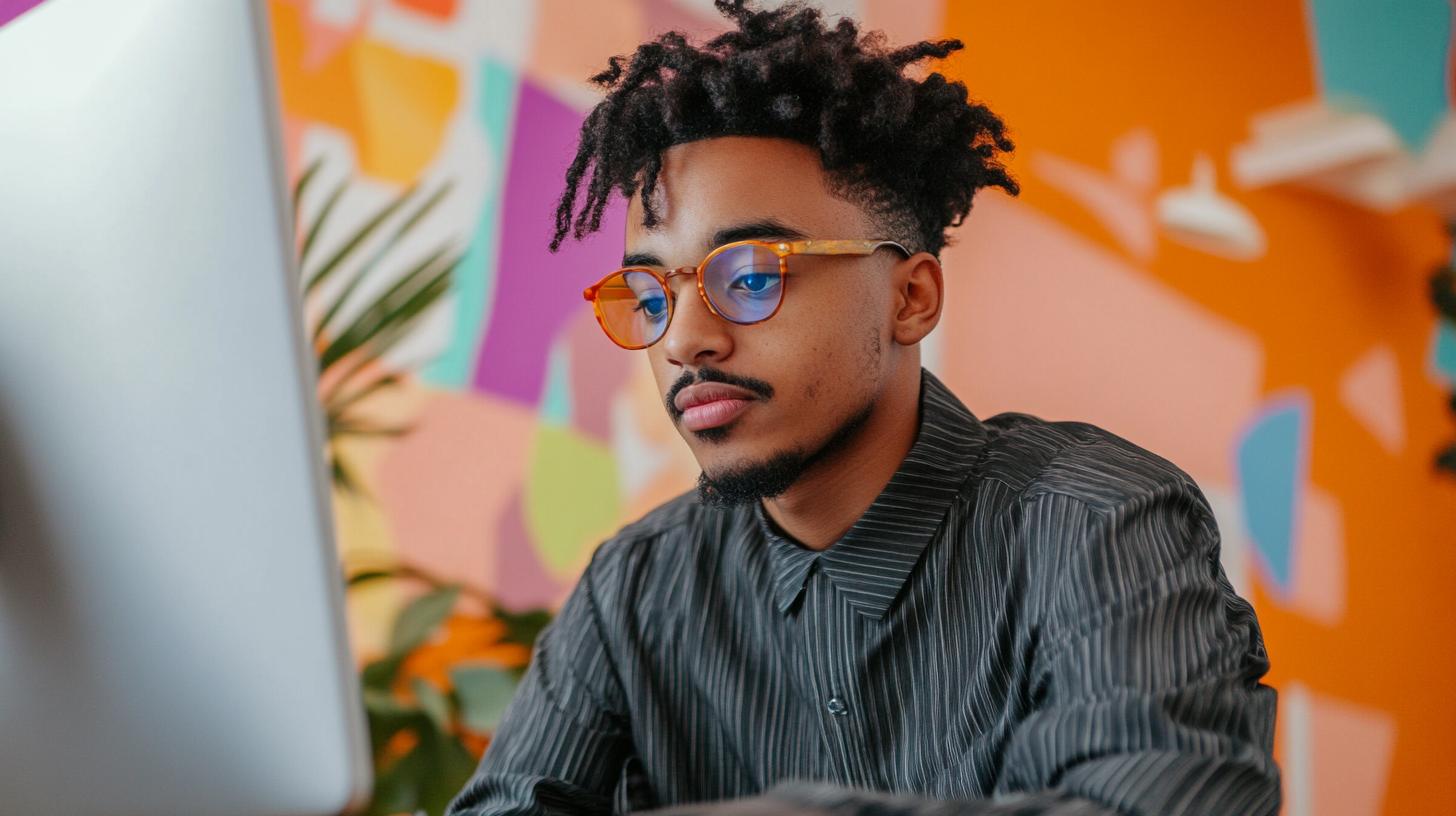In this article:
- What is Design?
- Major Categories of Design
- Emerging Design Fields
- How to Choose Your Design Specialty
- The Future of Design
- Conclusion
Design is more than just making things look pretty. It’s about conceiving and planning what doesn’t exist yet—transforming ideas into reality through thoughtful creation. Understanding the vast landscape of design specialties can open doors to new opportunities and help you determine where to focus your creative energy.
Whether you’re just starting out or looking to expand your skills, this guide will walk you through the major types of design, what they entail, and why they matter in today’s market.
What is Design?
At its core, design is the practice of creating solutions to problems. It’s where function meets aesthetics, where practicality embraces creativity. Design transcends just making something visually appealing—it’s about crafting experiences that solve real needs, communicate effectively, and sometimes even challenge our perceptions.
Good design often goes unnoticed because it works so seamlessly. Bad design, on the other hand, frustrates and confuses. The goal is to create solutions so intuitive that users barely notice the thought and effort behind them.
Now, let’s explore the different types of design and how they shape the world around us.
Major Categories of Design
Let’s break down the design world into major categories before exploring the specific types within each. This will help you understand how different design disciplines relate to each other.
Visual Design
Visual design focuses on creating aesthetically pleasing and functionally effective visual elements. This broad category encompasses many design types that primarily rely on visual communication.

Get 300+ Fonts for FREE
Enter your email to download our 100% free "Font Lover's Bundle". For commercial & personal use. No royalties. No fees. No attribution. 100% free to use anywhere.
Graphic Design
Perhaps the most well-known type of design, graphic design involves creating visual content to communicate messages. Graphic designers combine typography, imagery, color, and form to achieve specific objectives and elicit certain reactions from viewers.
Graphic designers work on projects like brand identities, marketing materials, publications, and digital assets. They need strong visual composition skills and proficiency with design software like Adobe Creative Suite.
Within graphic design, you might specialize in areas such as:
Brand Identity Design
Brand identity designers craft the visual elements that represent a company’s personality and values. This includes logos, color palettes, typography, and style guides that ensure brand consistency across all touchpoints.
Successful brand identity design requires deep understanding of a company’s mission, target audience, and market positioning. It’s about creating distinctive visuals that tell a cohesive story and leave a lasting impression.
Publication Design
Publication designers create layouts for printed or digital materials like books, magazines, newspapers, and annual reports. They organize text and images in a way that enhances readability while maintaining visual interest.
This specialty requires knowledge of typography, grid systems, and the technical aspects of print or digital production. Publication designers need to balance aesthetic appeal with practical considerations like page count and production costs.
Packaging Design
Packaging designers create the external wrapping or container for products. Their designs must not only look attractive on store shelves but also provide necessary information, protect the product, and function practically for the end user.
This specialty combines graphic design with industrial design considerations. Packaging designers need to understand materials, printing techniques, and the physical constraints of packaging while creating visually appealing designs that stand out in competitive retail environments.
Typography Design
Typography designers focus on the art of arranging type to make written language legible, readable, and appealing. They select typefaces, adjust spacing, and design custom letterforms to enhance communication.
Good typography is fundamental to almost all design fields, but specialist typography designers go deeper, sometimes creating entirely new typefaces or custom lettering for specific projects.
Illustration
Illustrators create images that communicate ideas, tell stories, or complement text. Unlike photographers who capture existing subjects, illustrators create original imagery through drawing, painting, or digital techniques.
Illustrations can range from simple icons to complex narrative scenes. They’re used in books, advertisements, products, websites, and many other contexts. Illustrators often develop distinctive personal styles that make their work recognizable.
Digital and Interactive Design
As technology has evolved, so has design. Digital and interactive design specialties focus on creating experiences for screens and digital environments.
Web Design
Web designers create the visual layout, user interface, and aesthetic elements of websites. They determine how information is presented, how users navigate the site, and how the brand is expressed in a digital environment.
Modern web design requires understanding of responsive design principles, ensuring sites work well on various devices and screen sizes. Web designers often work closely with web developers who implement their designs in code.
User Interface (UI) Design
UI designers focus specifically on the points of interaction between users and digital products. They create the screens, buttons, icons, and visual elements that users engage with when using apps, websites, or other digital products.
UI design requires attention to detail, consistency, and visual hierarchy. Good UI designers understand platform conventions while creating intuitive interfaces that users can easily navigate.
User Experience (UX) Design
UX design focuses on the overall feel of a product, examining how users interact with it and how it meets their needs. UX designers conduct research, create user personas, develop wireframes, and test designs to ensure they’re intuitive and satisfying to use.
While UI deals with specific interface elements, UX addresses the entire journey and emotional response of users. UX designers need strong analytical skills alongside creativity, as they balance user needs with business goals.
Mobile App Design
Mobile app designers create interfaces specifically for mobile applications. They must understand the unique constraints and opportunities of mobile platforms, designing for smaller screens, touch interactions, and varying device capabilities.
App designers need to be familiar with platform-specific guidelines (like Apple’s Human Interface Guidelines or Google’s Material Design) while creating distinctive experiences that stand out in crowded app marketplaces.

Game Design
Game designers create the rules, challenges, and interactions that make up video games. This includes designing game mechanics, levels, character progression systems, and the overall player experience.
Game design blends psychology, storytelling, and systems thinking. Game designers must create experiences that are engaging, balanced, and rewarding for players, whether they’re designing simple mobile games or complex virtual worlds.
Environmental Design
Environmental design deals with physical spaces and how humans interact with them. It spans the creation of buildings, landscapes, and interiors.
Architectural Design
Architectural designers plan and design buildings and other physical structures. They consider functionality, safety, aesthetics, and how structures relate to their surroundings.
Architecture requires technical knowledge of building materials and construction techniques, as well as artistic vision. Architects must balance client needs, regulatory requirements, and their own creative expression.
Interior Design
Interior designers shape indoor spaces to be both functional and aesthetically pleasing. They select color schemes, furniture, lighting, materials, and other elements to create environments that serve their intended purpose while reflecting the desired style and atmosphere.
Good interior design considers workflow, accessibility, and how spaces influence human behavior and emotions. Interior designers need to understand spatial planning, color theory, furniture design, and building codes.
Landscape Architecture
Landscape architects design outdoor spaces, including parks, gardens, campuses, and public areas. They work with natural elements like vegetation and water features alongside constructed elements like walkways, lighting, and structures.
This specialty requires knowledge of horticulture, ecology, and civil engineering alongside design skills. Landscape architects create sustainable, beautiful environments that connect people with nature.
Exhibition Design
Exhibition designers create temporary or permanent displays for museums, galleries, trade shows, and retail environments. They design spaces that guide visitors through a narrative experience, showcasing objects or information in engaging ways.
This specialty combines elements of interior design, graphic design, and sometimes interactive design. Exhibition designers must consider traffic flow, lighting, display techniques, and how to create memorable visitor experiences.
Industrial and Product Design
Industrial and product design focuses on creating manufactured goods that combine functionality, usability, and aesthetics.
Product Design
Product designers develop new physical products or improve existing ones. They consider how products function, how users interact with them, how they’re manufactured, and how they look and feel.
This field requires understanding of materials, manufacturing processes, ergonomics, and market trends. Product designers often create prototypes and work closely with engineers to ensure designs can be produced efficiently.
Furniture Design
Furniture designers create chairs, tables, storage units, and other items that combine functionality with aesthetic appeal. They must understand ergonomics, materials, construction techniques, and current design trends.
Successful furniture design balances comfort, durability, visual appeal, and sometimes innovation. Furniture designers may work with manufacturers to produce their designs or create custom pieces for specific clients.
Textile Design
Textile designers create patterns and designs for fabrics used in clothing, upholstery, home decor, and other applications. They may work with various techniques including digital design, screen printing, weaving, and dyeing.
This specialty requires understanding of color theory, pattern repeats, and how designs translate to different materials. Textile designers need to stay current with fashion and interior design trends while developing their own distinctive aesthetic.

Fashion Design
Fashion designers create clothing and accessories. They sketch designs, select fabrics and materials, and determine construction methods for their creations.
Successful fashion design requires understanding of textiles, garment construction, body proportions, and current trends. Fashion designers may focus on specific types of clothing (like eveningwear or activewear) or develop comprehensive collections.
Media and Entertainment Design
These design fields focus on storytelling and entertainment across various media channels.
Motion Graphics Design
Motion graphics designers create animated visual elements for film, television, online video, and other digital platforms. They bring graphic design elements to life through movement, often combining typography, illustration, and other visual components.
This specialty requires knowledge of animation principles and software like After Effects, as well as strong graphic design fundamentals. Motion graphics designers need to understand timing, pacing, and how movement enhances communication.
Film and Video Production Design
Production designers in film and video shape the overall visual appearance of productions. They create or select settings, determine color palettes, and work with directors to establish the visual mood that supports the narrative.
This role requires understanding of storytelling, art history, and practical knowledge of how sets are constructed and filmed. Production designers collaborate with costume designers, prop masters, and cinematographers to create cohesive visual worlds.
Animation Design
Animation designers create moving imagery through various techniques, from traditional hand-drawn animation to 3D computer graphics. They design characters, environments, and movement that bring stories to life.
This specialty requires understanding of movement, timing, and exaggeration, as well as technical skills with animation software. Animators may specialize in character animation, special effects, or specific animation styles.

Character Design
Character designers create the visual appearance of characters for animation, games, comics, and other media. They determine physical attributes, clothing, expressions, and poses that communicate personality and support storytelling.
Successful character design requires understanding of anatomy, costume, color psychology, and storytelling. Character designers often develop style guides that ensure consistency when characters are drawn by multiple artists.
Sound Design
Sound designers create audio elements that enhance visual media. They select, record, or create sounds for films, games, websites, and other experiences, shaping how audiences respond emotionally to what they see.
This specialty requires knowledge of audio recording and editing techniques, as well as an understanding of how sound influences perception. Sound designers work with everything from dialogue and music to ambient noise and special effects.
Specialized Design Fields
Beyond these major categories, there are numerous specialized design fields that focus on specific contexts or combine multiple disciplines.
Service Design
Service designers create the processes and experiences that make up services, from healthcare to retail to digital platforms. They consider all touchpoints between organizations and users, designing systems that are efficient, effective, and satisfying.
This specialty combines elements of UX design, business strategy, and sometimes environmental design. Service designers often use journey mapping, service blueprints, and other tools to visualize and improve complex service systems.

Information Design
Information designers organize and present complex data or information in ways that make it accessible and understandable. They create diagrams, charts, maps, and other visualizations that clarify relationships and reveal insights.
This specialty requires strong analytical skills alongside visual design abilities. Information designers must understand both the content they’re working with and the needs of their audience, creating visuals that illuminate rather than confuse.
Wayfinding Design
Wayfinding designers create systems that help people navigate physical spaces. This includes signage, maps, directional indicators, and other elements that guide people through environments like airports, hospitals, or urban areas.
This specialty combines graphic design with environmental design. Wayfinding designers need to understand how people orient themselves in space and make navigational decisions, creating systems that work for diverse users.
Instructional Design
Instructional designers create learning experiences, from educational courses to training programs. They determine how information is structured, presented, and reinforced to facilitate effective learning.
This specialty requires understanding of learning theory and educational psychology alongside design skills. Instructional designers need to analyze learning needs, develop appropriate materials, and evaluate their effectiveness.
Sustainable Design
Sustainable designers create products, buildings, and systems that minimize environmental impact. They consider factors like energy efficiency, material selection, waste reduction, and lifecycle analysis in their design process.
This approach can be applied across multiple design disciplines, from architecture to product design. Sustainable designers need to understand environmental science alongside their specific design field, finding solutions that are both effective and ecologically responsible.
Emerging Design Fields
As technology and society evolve, new design specialties emerge to address changing needs and opportunities.
Virtual Reality (VR) and Augmented Reality (AR) Design
VR and AR designers create immersive digital experiences that blend with or replace the physical world. They design three-dimensional spaces, interactions, and interfaces for these emerging platforms.
This field requires understanding of spatial design, user experience, and the unique capabilities and constraints of VR/AR technology. Designers must consider factors like movement in virtual space, depth perception, and physical comfort.
Voice User Interface Design
Voice UI designers create interfaces controlled by spoken commands rather than visual elements. They design the conversation flow, responses, and overall interaction model for voice assistants and other voice-controlled systems.
This specialty requires understanding of conversation design, natural language processing, and audio feedback. Voice UI designers must create interactions that feel natural while effectively fulfilling user needs.

AI and Machine Learning Design
AI designers shape how artificial intelligence systems interact with users, how they present information, and how they integrate into products and services. This includes designing frameworks for how AI makes decisions and communicates its processes.
This emerging field combines UX design with data science understanding. AI designers must consider issues like transparency, user trust, bias mitigation, and how to create systems that augment rather than replace human capabilities.
How to Choose Your Design Specialty
With so many design fields to choose from, how do you decide where to focus? Here are some factors to consider:
Personal Interests and Strengths
Which types of design naturally excite you? Where do your existing skills and talents lie? The intersection of your passions and abilities is often the best place to start.
If you love storytelling, you might explore animation or game design. If you’re analytical and enjoy organizing information, information design or UX might be a good fit. Pay attention to what aspects of design you’re drawn to.
Market Demand and Opportunities
Some design fields have more job opportunities than others. Research the market in your area or in the remote work sphere to understand where the demand is highest.
Digital design fields like UX/UI are currently experiencing high demand, while more traditional fields like print design may have fewer openings. However, specialized expertise in any field can make you valuable to the right clients.
Lifestyle and Work Environment Preferences
Different design fields come with different work environments and lifestyle considerations. Think about whether you prefer:
Working independently or collaboratively
Consistent projects or varied challenges
Fast-paced work or longer, more involved projects
Technical problem-solving or more artistic expression
Your design specialty should align with how you want to work day-to-day.
Growth Potential
Consider how your chosen specialty might evolve over time. Does it have staying power in a changing world? Are there opportunities to grow your skills and take on more complex projects?
Emerging fields may offer more growth potential but also more uncertainty. Established fields may be more stable but potentially more competitive.
Continuing Education
Design fields evolve rapidly, especially those tied to technology. Stay current by:
Following industry blogs and thought leaders
Taking courses in new tools and techniques
Attending conferences and workshops
Experimenting with personal projects
Ongoing learning keeps your skills sharp and your work relevant in a changing marketplace.
Collaboration and Community
Building relationships with other designers and creative professionals can enhance your freelance career through:
Referrals from peers when they’re too busy or not the right fit for a project
Collaborative opportunities that allow you to take on larger projects
Feedback and perspective on your work
Emotional support during the ups and downs of freelancing
Don’t view other designers solely as competition—they can be your most valuable allies.
The Future of Design
Design continues to evolve as technology advances and society changes. Some trends shaping the future of design include:
Interdisciplinary Approaches
The boundaries between design specialties are becoming increasingly blurred. Many of today’s most innovative designers work across multiple disciplines, combining skills from different fields to create new solutions.
Being versatile while maintaining depth in your core specialty will likely become more valuable in the future design landscape.
AI and Automation
Artificial intelligence tools are already changing design workflows, automating routine tasks and generating design options. Rather than replacing designers, these tools are becoming collaborators that handle repetitive work while designers focus on strategic and creative decisions.
Successful designers will learn to work alongside AI, using it to enhance their capabilities rather than seeing it as a threat.
Inclusive Design
Design that works for people of all abilities, backgrounds, and circumstances is becoming a priority across design fields. Inclusive design considers diverse needs from the beginning rather than as an afterthought.
Developing skills in accessibility and inclusive design practices will make you more valuable to clients who recognize the importance of reaching all potential users.
Sustainability Focus
As environmental concerns intensify, sustainable design practices are moving from niche to mainstream. Designers across specialties are being asked to consider environmental impact and create solutions that are both effective and responsible.
Understanding sustainable materials, processes, and principles will become increasingly important in many design fields.
Conclusion
The world of design is vast and varied, offering countless paths for creative professionals to explore. Whether you’re drawn to the precision of typography, the immersion of VR design, the functionality of product design, or any of the dozens of other specialties, there’s a design field where your unique talents can shine.
Your journey might lead you to specialize deeply in one area or to combine multiple design disciplines in your practice. Either approach can lead to a fulfilling and successful career if you commit to ongoing learning, quality work, and creative exploration.



